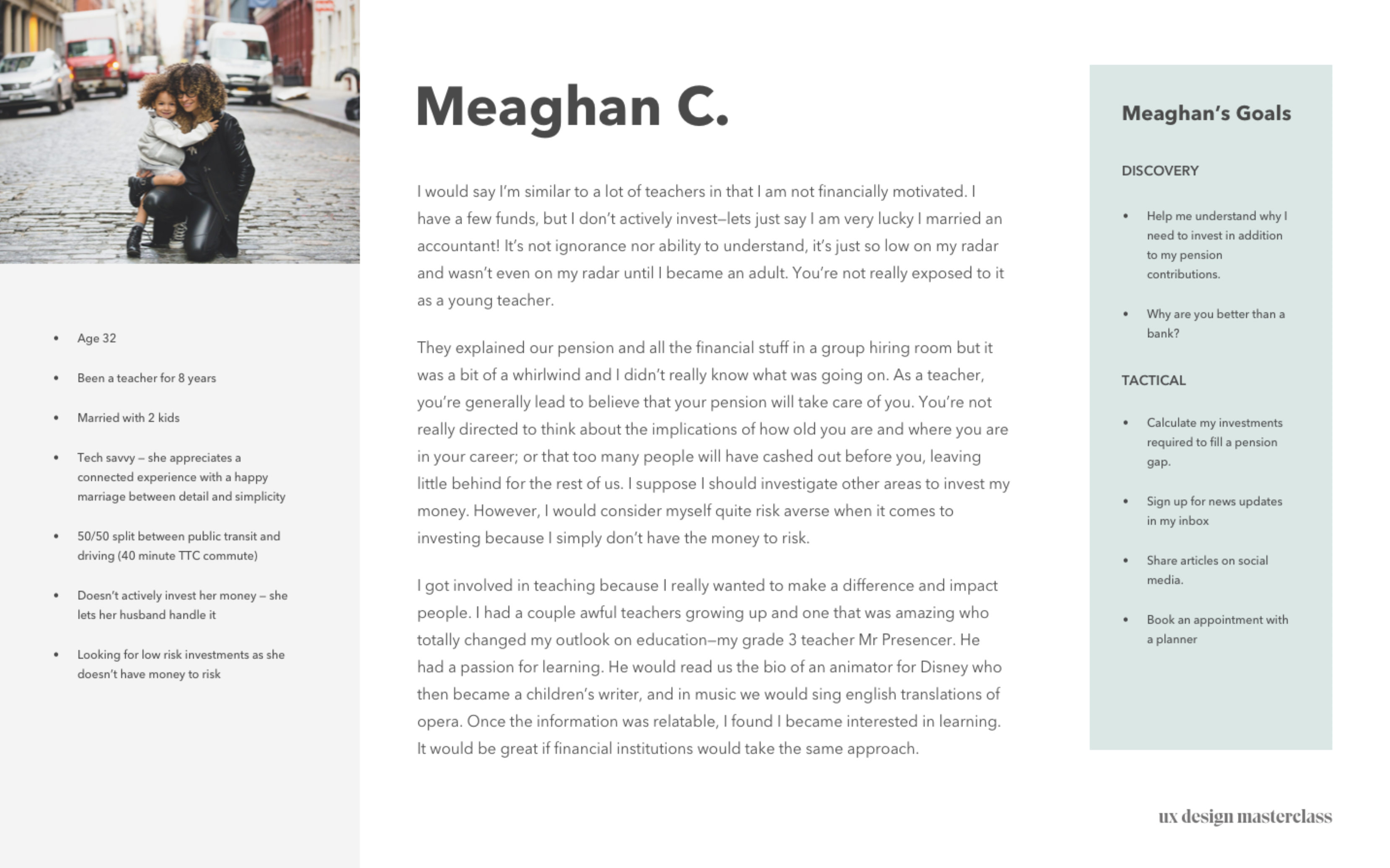How Creating Personas Leads to Better Customer Experience (CX)

To truly understand what makes your audience tick, how to speak to them, and eventually how to win them over, creating buyer personas is vital.
You’re always hearing about buyer personas and how they can help you build better marketing, but aren’t quite sure where to start. Sound familiar? We’ve broken this topic down for you in this article which will get you up and persona-ing in no time!
Why Buyer Personas Are Effective And How To Build Them
Clarity is a hallmark of effective communication. Whether you’re having a simple conversation, placing an order, making a speech, or telling a story, making an impact on your audience requires your message coming across unambiguously.
It’s true that using simple language is key to achieving clarity. There’s truth to that, but that doesn’t go deep enough. To truly define what constitutes clarity, you need to have a deep understanding of the audience. An expert in mobile marketing giving a speech is going to want to use different words, specifics, and terminology when addressing a general audience versus one made up of fellow marketers.
This nuance is key to clarity in brand storytelling, particularly for B2B companies (though not exclusively, by any means). We’ve previously dived into how marketing frameworks such as the Buyer’s Journey help a company in the early stages clearly define their brand story. But who that story is being told to is also of utmost importance. And to understand what makes your audience tick, how to speak to them, and how to win them over, creating buyer personas is vital.

One example of what a buyer persona could look like
What is a buyer persona?
Simply put, a buyer persona is a distillation of your key potential customers—those who you want to purchase your product or service. They are the heroes of your brand story, and just like any other storyteller, the fun part is that you get to make up your characters. They aren’t real people, but combinations of real people whose desires, likes, dislikes, pain points, and personalities help inform your marketing decisions.
Why are buyer personas important?
People are interacting intimately with brands literally thousands of times a day. Simply putting your name and product out there isn’t enough to break through the clutter, even if your product or service blows all the others out of the water.
B2C companies are more attuned to this, but the reality for B2B companies is that their prospects are also having these same interactions as well. Whether in their personal or business lives, potential buyers of B2B products are also inundated throughout their days with unending streams of content.
The key to making your brand stand out is to be indispensable to your consumers by understanding your consumers. If you have a deep understanding of what your consumer is looking for, what satisfies them and what they value, you have a chance of turning their interest into true brand loyalty.
Personas help achieve this. 71% of companies that exceed their revenue and lead goals use personas. And, content created based on personas increased customer engagement sixfold. However, despite the clear value, only 44% of B2B marketers are using personas. Why? perhaps because they never bothered to do the work to build effective personas.
But, we know you’re not like that!

This buyer persona takes a more narrative approach
How do I build buyer personas?
Personas are fictional archetypes that represent a company’s target customers. When creating them, you want your personas to be as realistic as possible. And the only way to achieve that is to learn as much as you can about the people you want to interact with. The bedrock of personas is research.
First, you’ll want to conduct some general background research. You’ll likely have done some of this in the early stages of building your brand when defining your brand purpose, positioning and mission statements. Here’s where you’ll want to gather as much information as you can on the industry, the marketplace you’re looking to enter, your main competitors, potential future disruptions.
And you’ll want to do this, crucially, for your potential buyers. Identify the industries they are in, what position they hold, what challenges they are dealing with from a business perspective, and what their available solutions are. This helps you narrow down from a large pool of people, as you start to get a clearer definition of who your target customers really are and what really matters to them.
Then, there are two types of research you can, and in almost all cases, will want to conduct to clearly define your buyer personas: qualitative and quantitative research.
Qualitative Research
The above background research is an example of qualitative research—it’s not about gathering numerical data (more on that below), but about gaining insights around the underlying desires, problems, and motivations of your potential buyers. To really understand what your potential buyers are seeking, you’ll want to talk to them directly.
Qualitative research gives the subject the freedom of an open-ended platform, so the most important aspect of gathering effective qualitative research is in the listening.
Interviews and focus groups allow your respondents to be open and honest about their problems and what they are looking for in a solution. They’re not confined by a form of questions that don’t quite offer them the specific response which can unlock a key insight into how you build your brand story to effectively convert interest into buyers.
General wisdom states that you want to interview 5-10 people for each persona to gain true insights that are grounded in fact. You’re looking to form a complete and accurate picture, so seek to find answers to questions like these:
- Do members of the audience have common pain points, or reasons for buying your product or service?
- Do most audience members primarily do research on their phones?
- What time of day are most people researching your product or service?
- What apps are on their phone? What books do they read? What do they do in their down time?
Conducting qualitative research can be rigorous, but it’s worth it. At this stage you’re not trying to make any key, final determinations, but develop an initial understanding of your buyers and a foundation for which you can move forward.
The more you know, the more relevant your content becomes as it works to answer their questions and address their needs. This is the core principle at the heart of persona creation.
Quantitative Research
You don’t need to be a numbers genius to conduct useful quantitative research and glean useful insights out of the results.
Quantitative research is the gathering of top-level, numerical data and general results from a sample of your population. So once you’ve identified your core group of targets, sending out a detailed survey with specific questions can be a good way to further hone in on the understandings you’ve gleaned from your previous research. Ideally, you will end up with some percentages that further clarify what’s important to your potential buyers.
If your research is effective, you’ll start to see common themes developing, like “CMOs today need to show fast growth without breaking the bank,” or “CTOs are having trouble keeping up with what technologies their employees find worthwhile.”

Our recommended format: Combines narrative with demographic data and UX goals to form a complete picture and inform design and content decisions
The Fun Part: Creating Buyer Personas
Now it’s time to write. Personas are written descriptions of archetypal users who represent the motivations of your audience. You’ll want to give your personas a name, even use a stock photo to give them a face. Anything you can do to flesh out your persona and make them as real as possible will only help.
There is no one correct format for creating personas. We’ve used a number of different ones with our clients as you can see throughout this article. Some are more visual, while others are almost exclusively written. Regardless of format, a good practice is to build your personas in the first person. This isn’t a requirement, but many times it can help marketers get inside the heads of their potential buyers and unlock key insights into what motivates them.
First, start off with some basic biographical information: Age, Location, Occupation, Marital Status, whether they have kids or not. Then, give their biography a little more detail: how tech-savvy are they? What types of content do they consume on a daily basis? You can include the types of brands they are a fan of, and what tools they use throughout their daily workday.
Next, you’ll want to define their goals. As simply as you can, define what the persona is looking for. In some personas, we find it useful to determine discovery goals as well as technical goals. For instance, a discovery goal could be what that the buyer wants to learn when they visit a website, or what they expect to see when visiting a social media feed. Tactical goals, on the other hand, are things that they want to achieve on a website or social feed.
Then, it’s good to clearly define the persona’s frustrations or pain points. What barriers are in their way to achieving their goal or accomplishing their tasks? What does the existence of these pain points force them to do with their time and effort instead? Understanding where you, as a brand, can interject and help smooth out a process or make something easier is a huge step towards ingratiating yourself to a potential customer.
These are the core aspects of an effective buyer persona, but you can always go deeper if you’d like. Define your personas top character traits, what departments they liaise with most often, or even how they spend their downtime. The goal is to paint as specific and clear a picture of your potential buyer as possible.
You should create at least two or more distinct personas. If your data shows that all of your prospective buyers are very similar, it’s likely that you’re either a) targeting too small of a group of people, or b) not differentiating the folks in your target market enough.

I’ve created my personas. Now what?
When your personas are created, you can now start building out your marketing and communications.
For example, knowing your buyers will help inform the voice, tone, and words you use, as well as the way you will distribute your marketing in order to reach the folks you’ve identified as your potential buyers.
Understanding their pain points and goals will drive the content you create and how you prioritize it. For example, if persona A is an evaluator that has a goal of understanding product costs and features, then it’s a good idea to make that content a priority. If you know they primarily use their phone for research, then your site better have a great mobile experience.
The more you know, the more relevant your content becomes as it works to answer their questions and address their needs. This is the principle at the heart of persona creation.
However, remember, things change on a dime. While a lot goes into building effective personas, it’s not good to rely on the same exact personas forever. Keeping a keen eye on the marketplace and what new challenges arise for your customers will help you adjust your personas to reflect the changing reality.
Now that you’ve built your buyer personas, you should have a much deeper and more meaningful understanding of your potential customers. Knowing someone deeply means you can instinctually sense when they’re unhappy, and what you can do to change how they feel. When you’ve achieved this on a brand level, you no longer have mere customers or buyers. You have fans.
Persona images courtesy of Filament.
If this article helped you, please help us by sharing it or recommending to a friend. Thank you!


